#122 in Vietnam
Bì Cuốn: Basic Information
Pronunciation
Alternative Name(s)
Dish Type
Course
Mealtime
Popular Variations
Bì Cuốn: Ingredients and Preparation
Main Ingredients
Main Cooking Method
Preparation Process
Bì Cuốn: A Deep Dive
Cultural Significance
Taste
Texture
Aroma
Color
Serving Style
Serving Temperature
Accompaniment
Occasions
Seasons
Special Diets
Calories
Popularity
Popular Similar Dishes
- Gỏi Cuốn
- Bò Bía
- Lumpiang Sariwa
- Poh Pia Sod
Popular Dining Area
Bì cuốn is a variation of the traditional Vietnamese spring roll that combines soft rice paper, fresh herbs, thinly shredded pork, and pork skin (bì).
To make bì cuốn, lay out a rice paper sheet, add these ingredients, roll it up, and dip it in nước mắm tỏi ớt (Vietnamese dipping sauce), or enjoy it with pickled vegetables.
In Vietnamese households, especially during important festivals, bì cuốn are traditionally made into long rolls, stacked, and cut into bite-sized pieces.
They often stick together on the plate, requiring diners to separate them with chopsticks before eating.
When served at street vendors, bì cuốn is typically prepared in individual rolls, allowing for easy handling and consumption.
Despite its simple appearance, bì cuốn offers a complex blend of flavors: the fragrance of fresh herbs, the chewiness of vermicelli, and the crunchiness of pork skin.
There is a vegetarian version of bì cuốn which is bì cuốn chay made from tofu, yam, and stir-fried carrots as a substitute for pork.
I’ll guide you through a comprehensive overview of the dish, including its unique features, ingredient list, side dishes, advantages and disadvantages, common queries, and dishes that are alike.
Key Points
Bì Cuốn Images
What Are The Main Components of Bì Cuốn?
Bì Cuốn is a Vietnamese dish known for its fresh and light flavors, typically consisting of 4 key components:
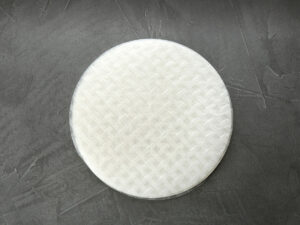
Wrapper
Bánh tráng (rice paper).

Shredded pork and pork skin (bì)
The pork belly is seasoned and fried until golden, while the pork skin is boiled, cleaned, and cut into thin strips.

Roasted rice powder (thính)
The thinly sliced pork and pork skin are then mixed with thính (roasted rice powder) and seasonings.

Vegetables
Commonly includes lettuce (such as green leaf or butter lettuce), mint, cilantro, Thai basils, cucumber, etc.
To fully appreciate the delicate balance of flavors in Bì Cuốn, it’s essential to consider the variety of accompaniments that enhance its taste.
What to Serve with Bì Cuốn?
When serving Bì Cuốn, there are several traditional accompaniments that pair well with it:
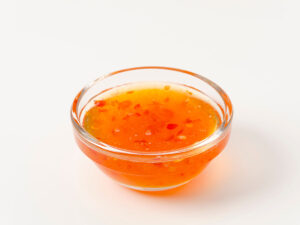
Nước Mắm Tỏi Ớt (Vietnamese Dipping Sauce)
This is a staple dipping sauce in Vietnamese cuisine. It’s a blend of fish sauce, garlic, chili, and sometimes a bit of sugar and lime juice. The pungent, spicy, and slightly sweet flavors of this sauce complement the savory taste of Bì Cuốn.

Đồ Chua (Pickled Carrots and Daikon)
Pickled carrots and daikon add a tangy and slightly sweet crunch to the dish. The acidity and crisp texture balance the softness of the rice paper and the richness of the pork.
While bì cuốn can be wonderfully enhanced by these traditional accompaniments, it’s important to consider the pros and cons of this dish.
Pros and Cons of Eating Bì Cuốn
Delving into the favorable and less favorable aspects of Bì Cuốn:
Pros
Cons
Having explored the various advantages and drawbacks of bì cuốn, let’s now delve into some frequently asked questions to further understand this delightful Vietnamese dish.



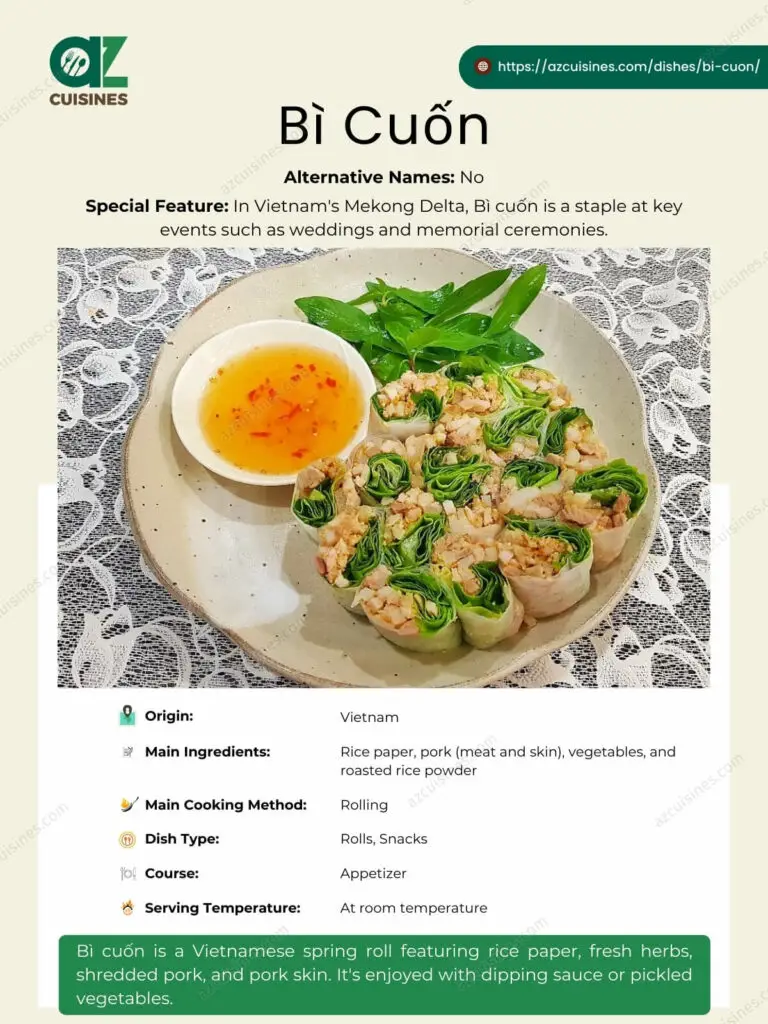
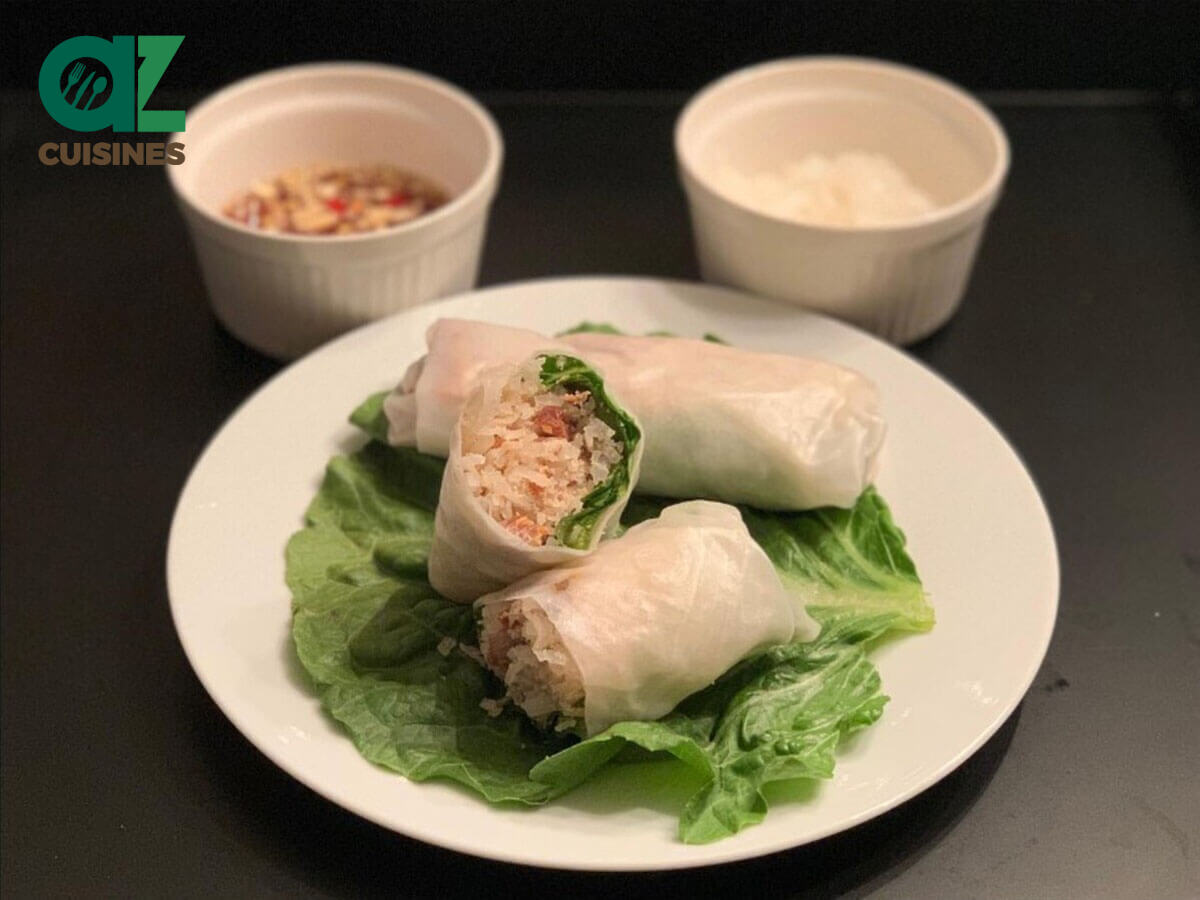
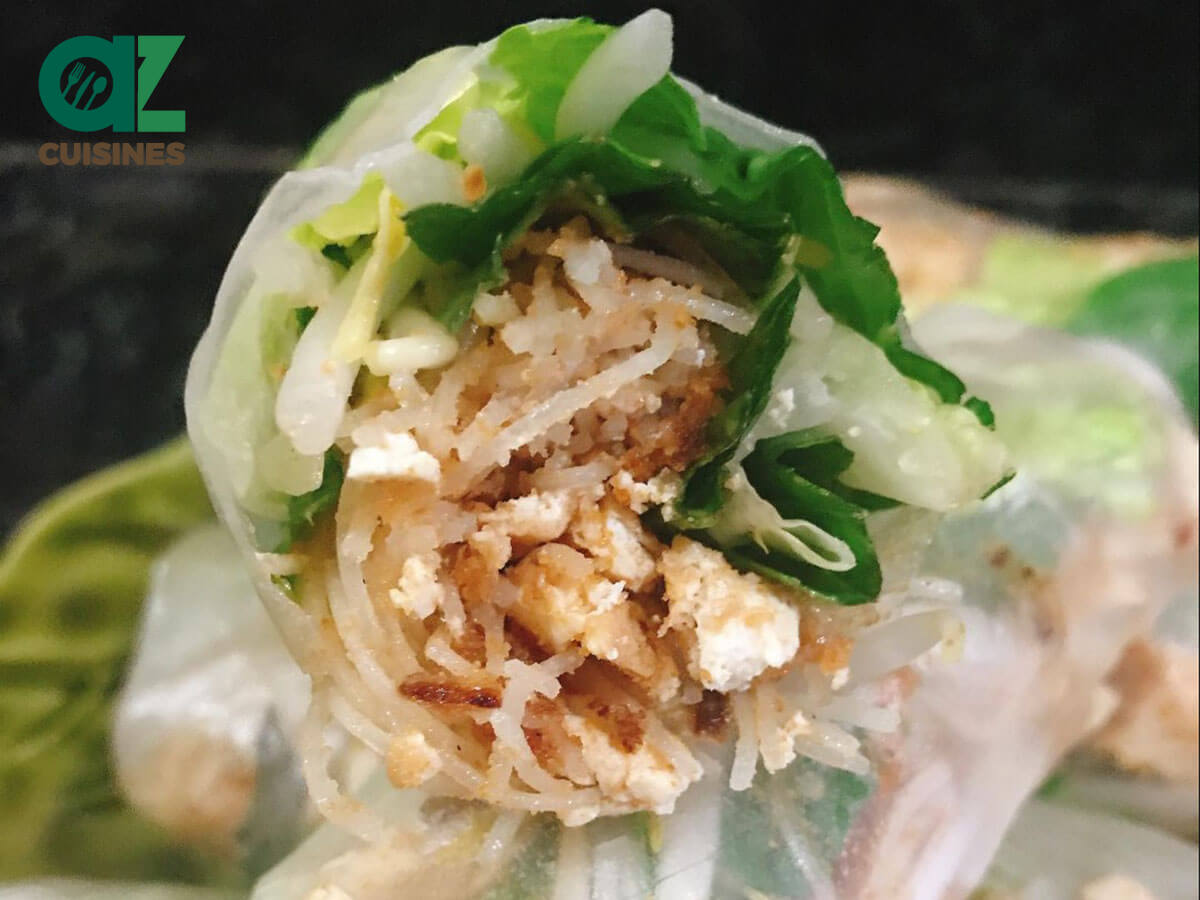
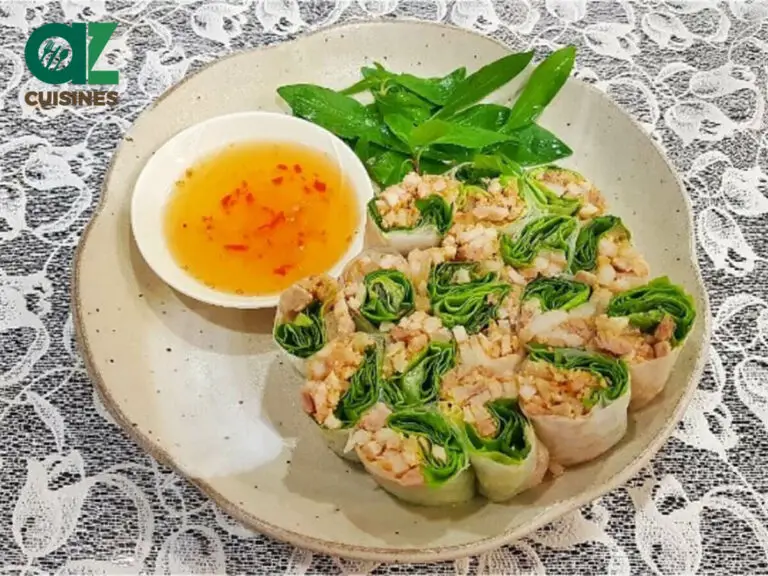
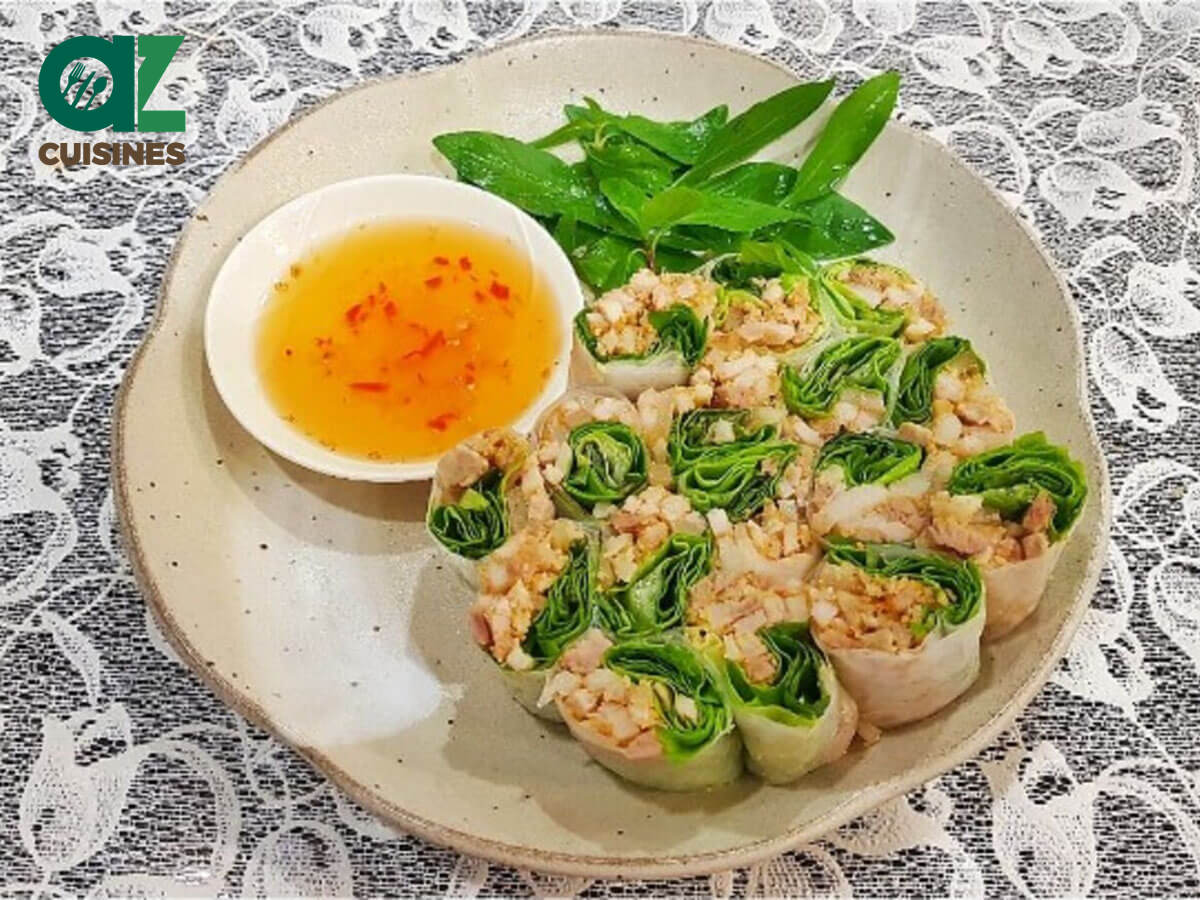
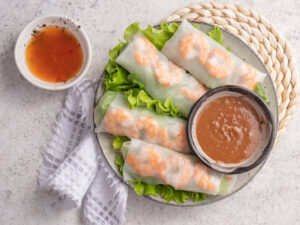
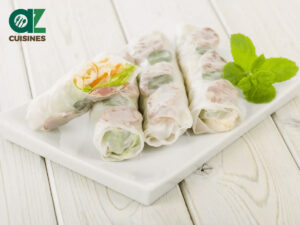
Truc Tran (Kris)
Senior Food Editor
Expertise
Home Cooking, Meal Planning, Recipe Development, Baking and Pastry, Food Editor, Cooking-video Maker, Vietnamese Food Evaluation Expert
Education
Truc Tran (Kris), an experienced food writer and editor, is great at exploring and describing global cuisines, from simple street food to fancy dining. In her writing, she skillfully mixes different flavors, cooking methods, and culinary traditions, showing the unique character of various cultures through their food and drinks. On azcuisines.com, Kris highlights her knowledge, especially in Asian cuisine and worldwide traditional dishes.